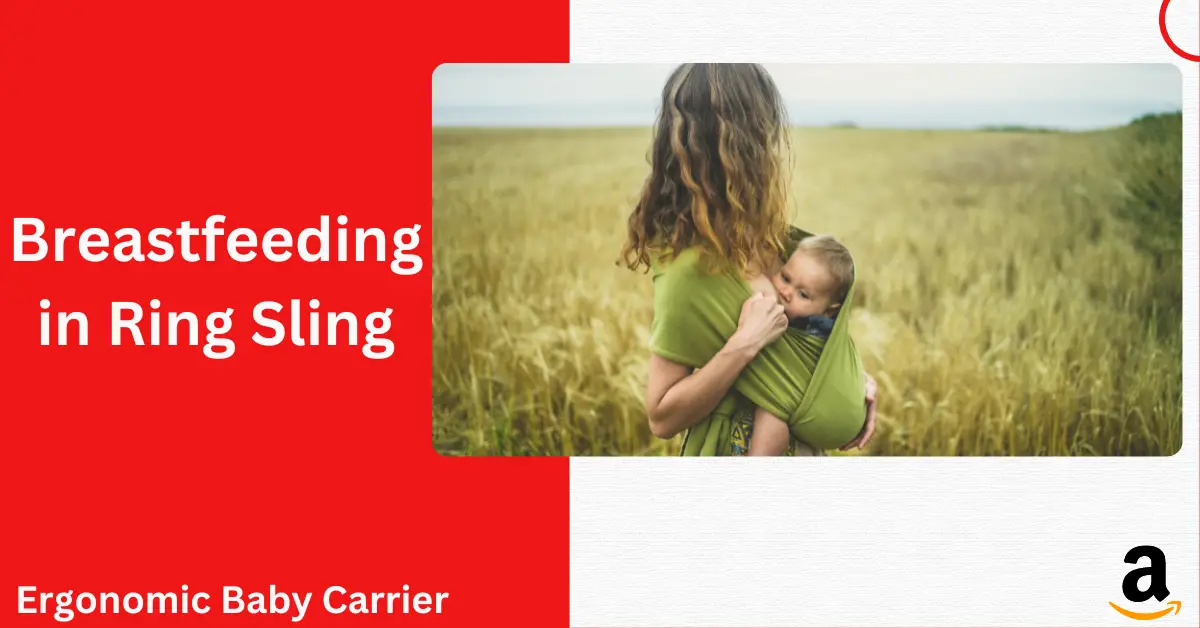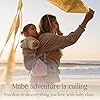Mabē Monarch Ergonomic Baby Carrier – Premium Cotton Soft Structured Newborn to Toddler Carrier with Hip-Healthy Design, 3 Carry Positions (7-35lbs), Lightweight & Breathable, (Houndstooth)
$129.00 (as of December 30, 2025 22:14 GMT +00:00 - More infoProduct prices and availability are accurate as of the date/time indicated and are subject to change. Any price and availability information displayed on [relevant Amazon Site(s), as applicable] at the time of purchase will apply to the purchase of this product.)As a mother, breastfeeding represents a unique and incredibly beautiful journey. It encompasses more than simply nourishing your baby; it’s a pathway to creating a deep and lasting bond. This ingenious method not only allows for discreet nursing but also fosters a strong connection between mother and baby. In this comprehensive guide, we’ll delve into the world of breastfeeding in a ring sling, exploring its benefits, techniques, and tips for a comfortable nursing journey.
Benefits of Breastfeeding in a Ring Sling
Breastfeeding in a ring sling offers numerous advantages for both moms and babies This approach fosters a feeling of intimacy and security, contributing positively to your baby’s development. Moreover, ergonomic positioning aids in healthy digestion and minimizes the likelihood of reflux. For moms, it provides convenience and freedom, allowing you to nurse on the go while maintaining privacy.
Getting Started: How to Breastfeed in a Ring Sling
Before you begin, make sure you have a properly adjusted ring sling that fits comfortably. Follow these steps for a successful breastfeeding experience:
- Choose the Right Sling: Opt for a well-designed ring sling that supports your baby’s head and neck. Ensure that the fabric is breathable and not too tight.
- Positioning: Adjust the sling so your baby is positioned at breast level. This ensures a comfortable latch and prevents strain on your back and shoulders.
- Latch On: Gently bring your baby to your breast while supporting their head. Allow your baby to latch on naturally, ensuring a good seal for effective nursing.
- Comfort is Key: Ensure both you and your baby are comfortable throughout the feeding session. Adjust the sling as needed to maintain a relaxed and secure position.
Tips for Comfortable Nursing
- Practice Makes Perfect: Like any new skill, breastfeeding in a ring sling may take some practice. Don’t be discouraged if it doesn’t feel perfect right away.
- Choose the Right Fabric: Opt for a soft and breathable fabric that doesn’t irritate you or your baby.
- Supportive Positions: Experiment with different positions to find what works best for you and your baby’s comfort.
- Stay Hydrated: Nursing requires extra hydration. Keep a water bottle handy to stay refreshed.
Transitioning Smoothly
Transitioning to breastfeeding in a ring sling can be a gradual process. Start with short nursing sessions at home to get the hang of it before venturing outside. Remember, practice and patience are key to mastering this technique.
Common Concerns and How to Address Them
1. Is it Safe? Absolutely! When done correctly, breastfeeding in a ring sling is safe and nurturing for both mom and baby.
2. Can I Nurse Discreetly? Yes, ring slings provide excellent coverage for discreet nursing in public spaces.
3. Will it Affect the Milk Supply? Nursing in a ring sling doesn’t impact your milk supply negatively. In fact, close physical contact can even stimulate milk production.
Conclusion
Breastfeeding in a ring sling is a wonderful way to nourish your baby while enjoying the closeness that breastfeeding brings. This technique allows you to embrace the beauty of motherhood without compromising on convenience. With the right sling and a little practice, you’ll be confidently nursing in a ring sling, creating cherished memories that last a lifetime. So, go ahead and embark on this incredible journey of comfort, bonding, and love.
Remember, every breastfeeding journey is unique. Embrace the experience, and enjoy this precious time with your little one. Happy nursing!
Disclaimer: This article is for informational purposes only and should not be considered medical advice. Always consult with a healthcare professional for personalized guidance.












